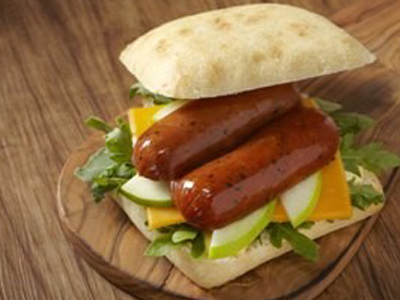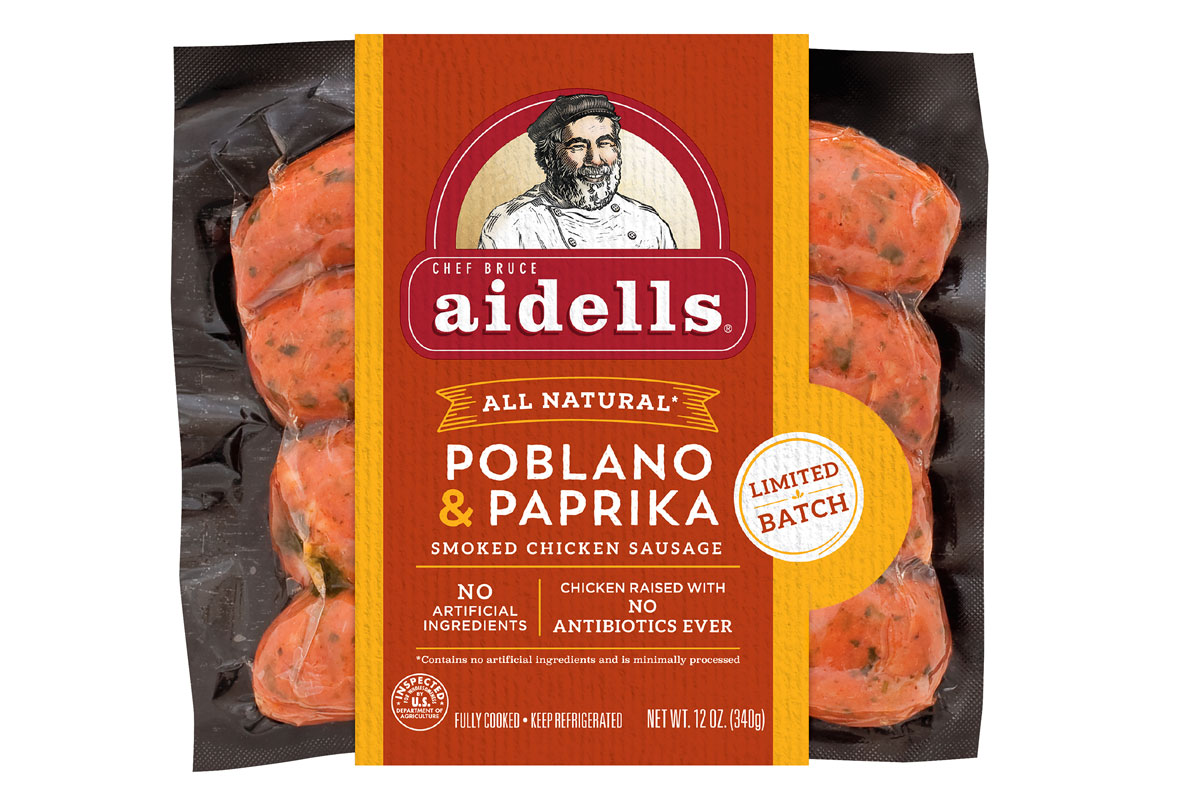Sausages are trending. Once considered an outlet for meat scraps and a means to preserve meat, sausages, also known as encased meat, have evolved into culinary creations that entice consumers’ taste buds with adventurous ingredients.
Curious carnivores often seek out exotic meats and blends while health-conscious shoppers find uncured lean poultry containing flavorful ingredients, such as fruits and cheeses, to be a culinary adventure. Vegetarian and vegan options have also given new life to the dogs, links and wursts category.
Think D’Artagnan’s venison and cherry sausage and Amylu Foods’ all-natural cranberry and cognac chicken sausage. The Field Roast vegan sausages are made by blending a wheat flour dough with fresh vegetables, herbs and spices.
There’s one thing all sausages have in common and that is the casing that holds the raw matrix together until it is cooked. Some casings function as edible transparent skins, while others are inedible coverings that are either removed during manufacturing or by the consumer prior to eating.
Historically sausage makers have used natural collagen casings, which are the cleaned and fat-stripped intestines from cows, hogs or sheep. Prior to use, they are soaked in brine, which functions as a natural sanitizer and preservative.
Hog casings are the most widely available and can be used for almost any kind of sausage. Sheep casings, on the other hand, are very tender and are used mostly for breakfast links and hot dogs. Beef casings are larger in diameter and tend to be thicker than hog and sheep casings; thus, they are used for firmer sausages, such as bologna and salami.

Regardless of the animal source, natural casings are recognized for enhancing and complementing the natural juices and quality of meats, spices and other flavorful ingredients found in today’s premium sausages. The collagen allows for deep smoke penetration, which is important to flavor and preservation. Natural casings also have elasticity and tensile strength, allowing for high-efficiency production and expansion during filling. They protect flavor without contributing any off-flavors, and they help sausage stay tender and juicy. And then there’s the attribute that consumers recognize the most — naturally cased sausages have a special “snap” and tender bite that most manufactured casings cannot provide.
As with any minimally processed food or ingredient, natural casings can vary in composition and quality. They also are readily influenced by the environment, meaning that the smoking and cooking of the sausage must be controlled, as must storage temperature and humidity.

Manufactured casings are increasingly an option. These are typically based on collagen, cellulose or gums and are usually a much more economical option than natural casings. All manufactured casings allow for uniform diameter links and result in fewer casing bursts.
Collagen casings are made from the same gelatinous material used to make gelatin dessert. The collagen is sourced from the bones, cartilage, connective tissue and skin of animals, traditionally cows.
Cellulose-based casings, also referred to as fibrous casings, are the toughest casings produced and are considered inedible. The meat matrix is stuffed into the casing and cooked. Upon sufficient cooling, the casing is peeled off, resulting in a skinless sausage. Fibrous casings may be designed to be permeable to smoke, much like their animal casing counterparts.
Manufactured collagen casings are best used for sausages that require maximum uniformity of finished product diameter, such as industrial-produced sausages sold at retail and packaged at predetermined weights or sizes, e.g., a foot-long hot dog, as well as deli-style meat rolls where uniformity of product makes it easier to slice. To prevent tearing or scarring of the cooked meat during casing removal, suppliers will often laminate the interior with a slippery coating for easy removal.
Cellulose casings are usually made from wood pulp and are not designed for eating. Other plant-based materials are now being used to make edible vegan casings. Some even have snap like their animal counterparts.
Another non-edible casing option is made from plastic. Plastic casings are made from one or more varied polymers. The plastic provides an impermeable barrier that prevents purge, and thus assists with yield. This barrier also prevents smoke absorption and therefore is intended for unsmoked products.
Most industrial-produced hot dogs are sold as skinless sausages and produced using either cellulose or plastic casings, while commercial smoked sausages, brats and similar products, such as those from Johnsonville, will use collagen casings for their uniformity and economics.
Artisan sausage makers, on the other hand, tend to prefer animal intestines. Aidells chicken sausages, for example, are handcrafted in small batches and stuffed by hand into natural pork casings. Gilbert’s chicken sausages, which tout that they are pork free, are made with beef casings. D’Artagnan’s chicken sausages are skinless, while the others use pork casings. The exception is the lamb merguez sausage, which is a popular street food in France. It is pork free and uses sheep casings.
With a casing available for every meat, poultry and vegan matrix, the future is bright for sausage innovation.


